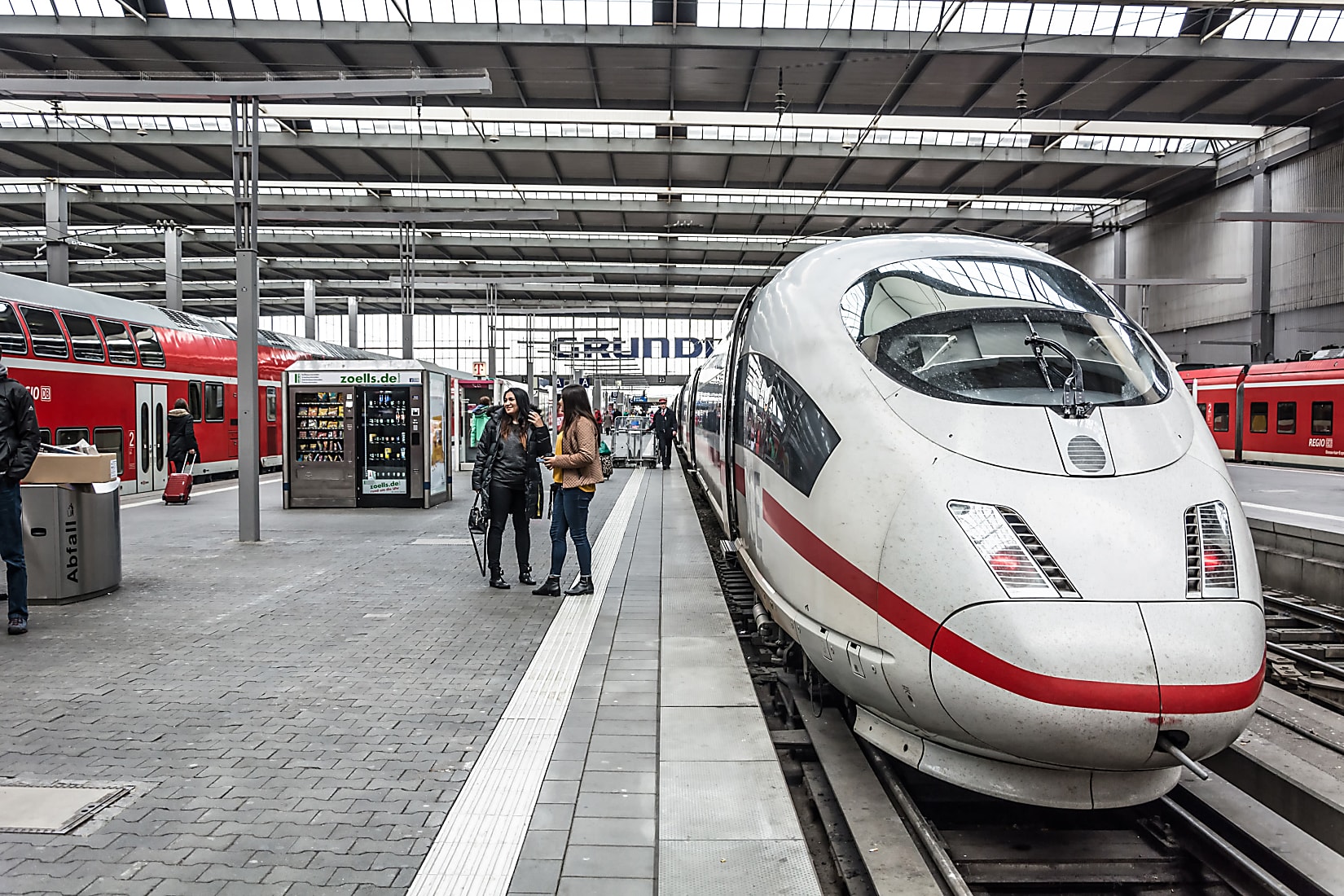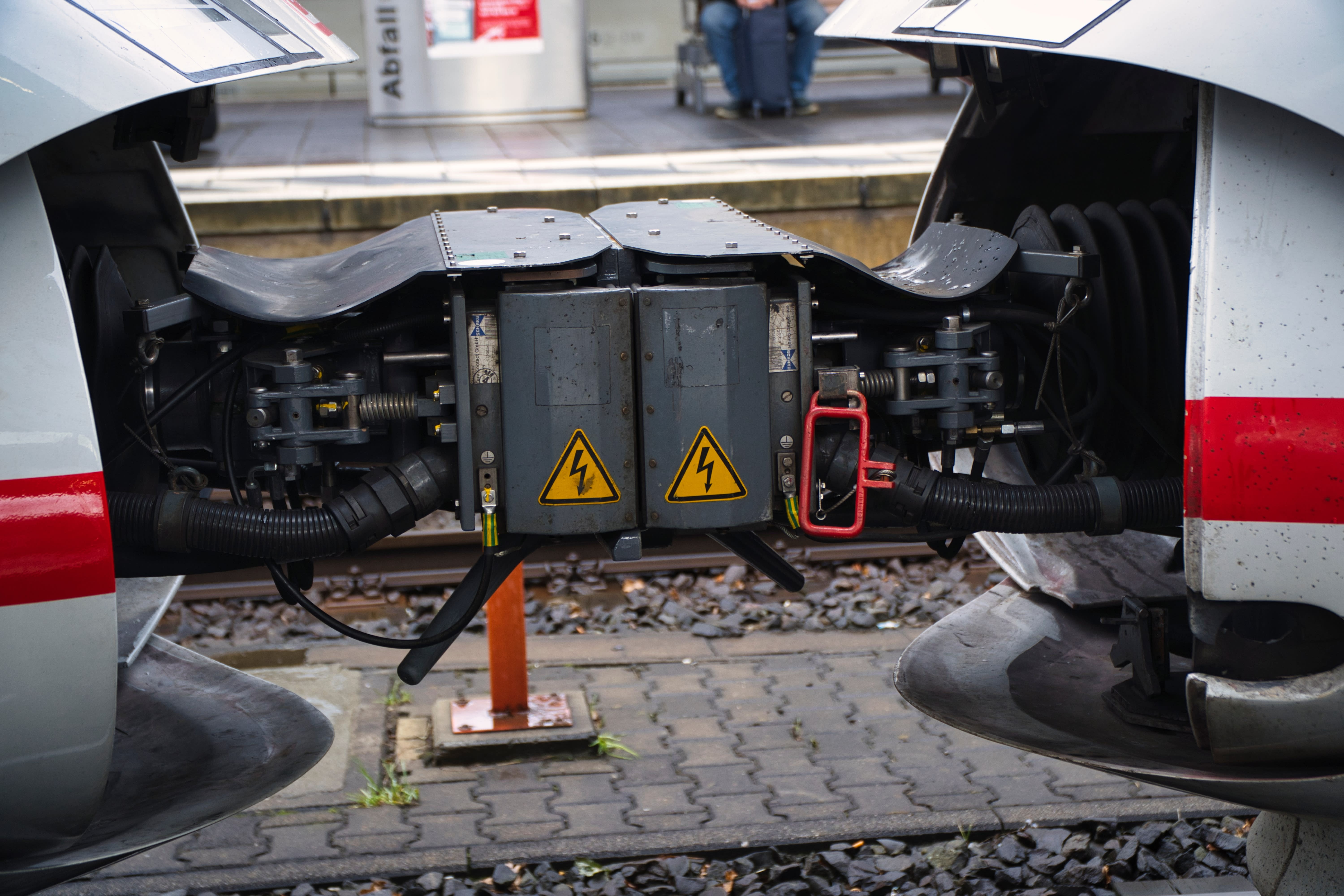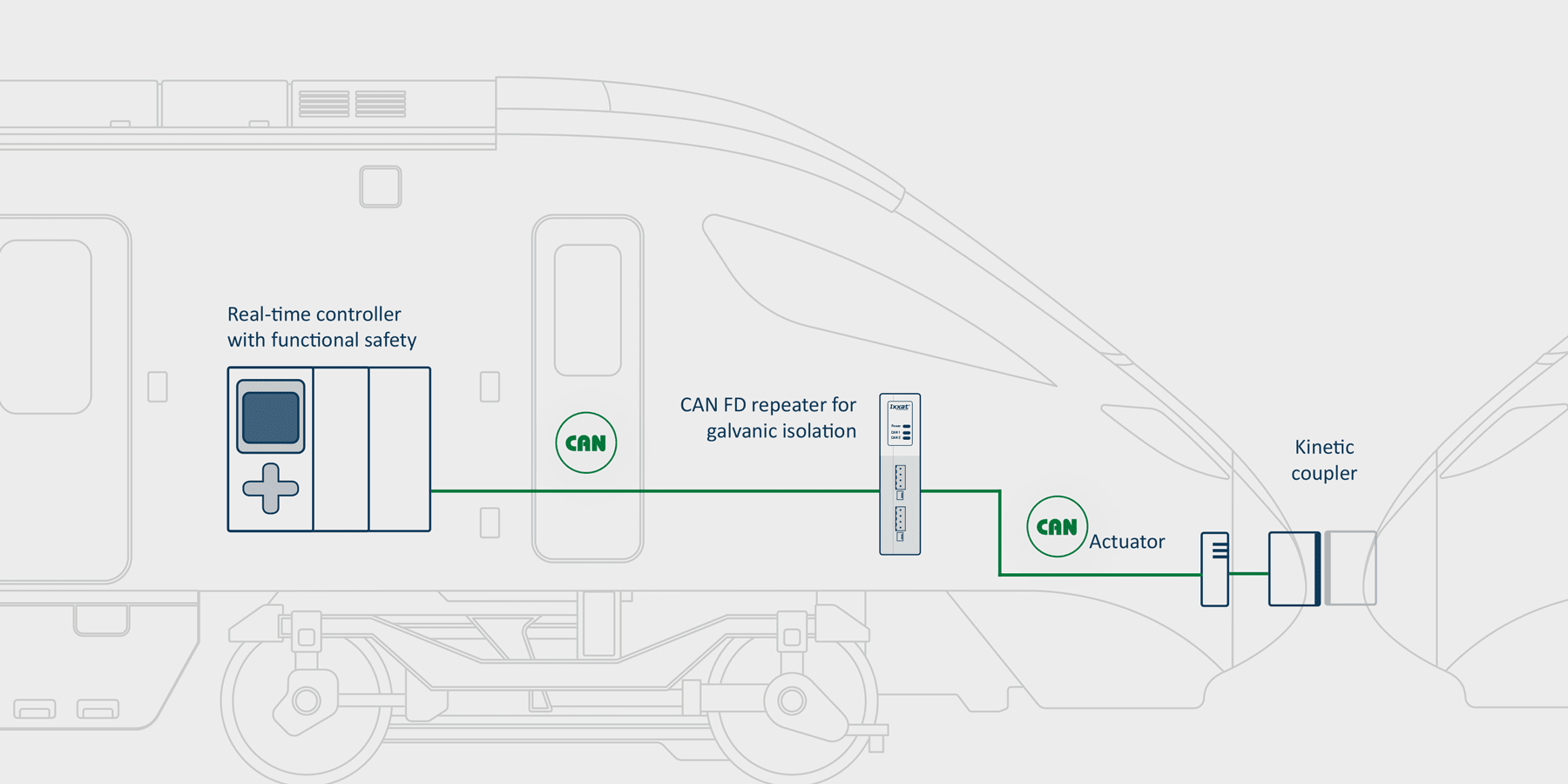
White papers
Stay up to date on the latest topics and gain industry insights from HMS' experts through our white papers, providing valuable knowledge and analysis.
The Ixxat CAN/FD Repeater Standard stabilizes CAN signals in train coupling systems, providing galvanic isolation and protection against voltage peaks, ensuring reliable communication and reducing downtime and maintenance costs.

Coupling systems are used in trains to securely connect locomotives, freight cars, and other rolling stock. The couplers are controlled automatically. A major German manufacturer’s kinetic couplers use the CAN bus to implement the communication between the controller, the actuator, and the kinetic coupler. Signal interference arising during coupling operations meant a reliable solution was needed to stabilize the CAN signal while also providing galvanic protection against voltage peaks – all in a very confined space. The HMS CAN/FD Repeater Standard met these exacting requirements to the customer’s complete satisfaction.
The customer’s CAN networks needed to maintain a galvanic isolation of 400 V for a duration of one minute to reliably protect against electrostatic discharge and voltage peaks that occur when trains are coupled and uncoupled. In particular, the CAN line needed protection between the controller and the actuator that moves the coupler. Voltage peaks are especially critical at this point as they can damage neighboring network and control components, which can lead to disruptions in train operations. This is why rail transport has especially strict requirements for the maximum values for interference and radiation effects in EMC tests, and compliance with those requirements is mandatory. In addition, this case called for a compact solution that could be mounted on a top-hat rail in the confined space available in the vehicle’s nose cover without adversely affecting the existing equipment.

To meet its strict requirements, the customer decided to use the CAN/FD Repeater Standard, which not only features galvanic isolation up to 5 kV (CAN-to-CAN and CAN-to-power) for one minute but also complies with all requirements for relevant EMC tests in rail transport (standard EN 50121-3-2). It was a perfect fit for the required minimum protection level of 400 V. Its compact dimensions (108 × 149 × 27 mm) make the repeater ideal for mounting on top-hat rails in the confined space of nose cover enclosures. It ensures reliable data transmission in the CAN network and eliminates the risks of voltage peaks. With this simple solution, the customer not only increased operational safety but also simplified installation and maintenance for the couplers, which resulted in a significant reduction in downtime and maintenance costs.

Besides its basic galvanic isolation and EMC conformity, the CAN/FD Repeater Standard has a number of other technical features including two CAN FD channels so it can support both CAN and CAN FD with arbitration rates up to 1 Mbit/s and data rates up to 8 Mbit/s. The TCAN1044 transceiver component provides better performance and reliability. A further special feature: external switches for the CAN bus terminating resistors, which make it easy to change the network topology without opening the housing. Convenient push-in connectors make installation quick and easy without tools. An intuitive user interface with clearly labeled LED indicators makes it easy to operate the device and monitor its status, even for users without in-depth technical training.
Solution: CAN/FD Repeater Standard
Country: Germany
Sector: Rail transport


Stay up to date on the latest topics and gain industry insights from HMS' experts through our white papers, providing valuable knowledge and analysis.

Our products solve everyday industrial communication problems. Discover how our customers have improved their business with HMS case studies.

HMS communication solutions help thousands of companies solve specific communication problems in many different industries and applications.